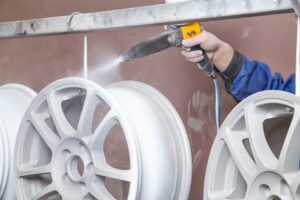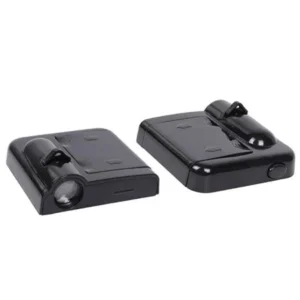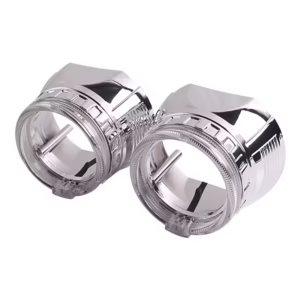Discover the comprehensive benefits of powder coating for your vehicle’s parts. Learn how powder coating provides superior protection, durability, and aesthetics for various automotive components.
Introduction
Vehicle parts face harsh conditions such as extreme temperatures, road debris, and corrosive substances. Protecting these components is essential for maintaining your vehicle’s longevity and performance. Powder coating offers a robust solution that provides superior protection, durability, and aesthetic appeal. This article explores the extensive benefits of powder coating for your vehicle’s parts, detailing why it is a valuable investment.
Understanding Powder Coating
What is Powder Coating?
Powder coating is a dry finishing process where a powdered pigment and resin mixture is applied to a surface, then cured under heat to form a hard, protective layer. It is widely used in automotive, industrial, and household applications due to its durability and high-quality finish.
The Powder Coating Process
The process involves several steps:
- Surface Preparation: Cleaning and pre-treating the part to remove contaminants.
- Application: Electrostatic spraying of the powder onto the part.
- Curing: Heating the coated part to form a continuous, hard coating.
Types of Powder Coatings
- Thermoplastic Coatings: Can be melted and re-melted without significant chemical change. They offer excellent impact resistance, ideal for heavy-duty applications.
- Thermoset Coatings: Undergo a chemical reaction during curing, creating a durable, heat-resistant finish. Commonly used for automotive and industrial parts.
Core Benefits of Powder Coating
- Durability: Powder coating provides a tough, long-lasting finish that resists chipping, scratching, and fading, making it ideal for parts exposed to harsh conditions.
- Protection: It offers excellent protection against corrosion, chemicals, and environmental factors, forming a barrier that prevents moisture and corrosive substances from reaching the underlying metal.
- Aesthetic Enhancement: With a wide range of colors and finishes, including matte, glossy, metallic, and textured options, powder coating allows for customization and enhances the overall appearance of your vehicle.
- Eco-Friendliness: Powder coating is environmentally friendly, producing minimal waste and containing no volatile organic compounds (VOCs).
Comparing Powder Coating to Traditional Paint
- Durability: Powder coating is significantly more durable than traditional paint, resisting chipping, scratching, and fading much better.
- Protection Levels: It offers superior protection against corrosion and chemicals, unlike traditional paint, which can wear down over time.
- Cost: While the initial cost of powder coating can be higher, its long-term durability and reduced maintenance make it cost-effective.
- Maintenance: Powder-coated parts are easier to clean and maintain, with a smooth, hard surface that repels dirt and grime.
Preparing for Powder Coating
Steps to Prepare Vehicle Parts
- Cleaning: Remove all dirt, grease, and contaminants.
- Decontamination: Use appropriate cleaners or solvents.
- Surface Preparation: Abrasive blasting or chemical etching for better adhesion.
Application Process: Professional vs. DIY
Professional Application
- Inspection: Checking for imperfections.
- Preparation: Cleaning and pre-treating the part.
- Application: Applying powder coating evenly.
- Curing: Heating the part for a hard finish.
DIY Application
- Preparation: Cleaning and pre-treatment.
- Application: Applying powder with an electrostatic spray gun.
- Curing: Using a home oven or specialized curing oven.
Tools and Materials Needed
- High-quality powder coating material
- Electrostatic spray gun
- Compressed air system
- Curing oven
- Cleaning and pre-treatment solutions
- Protective gear (gloves, mask, goggles)
Curing and Maintenance
Curing Time and Conditions
Optimal curing conditions include a temperature range of 300-400°F (150-200°C) and a curing time of 10-20 minutes. Avoid exposing the part to contaminants or moisture during curing.
Maintenance of Powder Coated Parts
Regular, gentle cleaning with a mild detergent and soft cloths is essential. Avoid abrasive cleaners and tools that could damage the coating.
Addressing Common Mistakes
To ensure longevity and effectiveness, avoid these common mistakes:
- Applying coating on a dirty or contaminated surface
- Skipping surface preparation
- Using improper curing temperature or time
- Ignoring manufacturer’s instructions
Debunking Myths
- Myth: Powder coating makes parts indestructible.
- Fact: It offers excellent protection but is not invincible.
- Myth: Once applied, no further maintenance is needed.
- Fact: Regular cleaning is essential to preserve the coating’s effectiveness.
- Myth: Powder coating is only for metal parts.
- Fact: It can be applied to various materials, including metal, plastic, and wood.
Cost Analysis and Decision Making
Cost Analysis
Applications can range from Kshs. 5000 to Kshs. 20,000 per part.
DIY vs. Professional Application
- Skill Level: Professional application ensures expert results, while DIY requires careful attention to detail.
- Cost: DIY is more affordable but may lack the durability and finish of a professional job.
- Time: Professional application is quicker, with the entire process handled by experts.
Powder Coating for Different Vehicle Parts
Applications
- Wheels: Provides a durable, protective finish that resists chipping and corrosion.
- Chassis: Offers superior protection against road debris, moisture, and corrosive substances.
- Engine Parts: Withstands high temperatures and provides a durable, heat-resistant finish.
- Accessories: Enhances the appearance and durability of bumpers, trim, and grilles.
Environmental Impact
Powder coatings are eco-friendly, producing minimal waste, containing no VOCs, and allowing for overspray recycling, reducing the environmental impact compared to traditional liquid paints.
Frequently Asked Questions
How long does powder coating last?
It can last several years, providing durable protection and aesthetic appeal.
Can powder coating be applied to plastic parts?
Yes, there are specific powder coatings designed for plastic surfaces.
Does powder coating prevent rust?
It provides a protective barrier that helps prevent rust and corrosion.
Can I apply powder coating myself?
Yes, DIY kits are available, but professional application ensures optimal results.
Is powder coating worth the cost?
For most vehicle owners, the long-term protection and aesthetic benefits justify the initial investment.
What should I avoid after applying powder coating?
Avoid using harsh chemicals and abrasive tools on coated surfaces.
Real-Life Testimonials
Many vehicle owners have experienced the transformative benefits of powder coating. Chris, a car enthusiast, shares, “After powder coating my wheels, they look brand new and have held up amazingly well against road debris and weather.” Jessica adds, “The durability and finish of the powder coating on my car’s chassis have been fantastic, providing excellent protection and a great look.”
Conclusion
Powder coating offers a superior solution for protecting and enhancing your vehicle’s parts. Whether you choose a professional application or a DIY approach, understanding the process and benefits of powder coating will help you make an informed decision and keep your vehicle’s parts looking their best for years to come.




